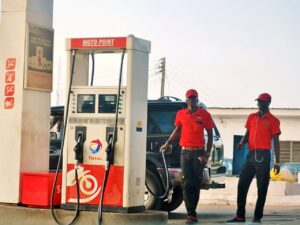[imagesource: Pierre Mangez]
Elon Musk revolutionised the car industry with Tesla’s electric cars, but what Candela’s engineers, software developers, yacht designers, and boatbuilders are doing for the boating industry is a lot more complex.
Gustav Hasselskog, who founded Candela Speed Boat in Sweden in 2014, and his team have created an “electric-powered, zero-emission speedboat that’s capable of travelling up to 50 nautical miles [around 92 kilometres] at 22-knots [around 4okmph] between charges”.
Forbes notes that this presents more challenges than vehicles face, because boats have to overcome more drag than cars.
Plus, there’s the challenge of being able to improve the performance of a conventional boat, along with its efficiency and “fuel” economy by reducing the drag and weight of a design.

Candela seems to have hit the nail on the head, though, having put the C-7 powerboat on the market, with demand increasing and the first 30 already snapped up.
Hasselskog and his team are clearly quite “good at doing hard things”:
Hasselskog knew the only way he and his team could design and build a long-range, high-speed electric-powered boat that would perform better than a conventional fossil-fuel boat while also producing zero emissions was to reduce drag by up to 80% of a conventional planning hull.
And the only way they could do that was to build a hydrofoiling boat that could “fly” the entire hull out of the water in an efficient and easy-to-control way.
The C-7 (and other boats from the company) use a proprietary foiling system to “fly” above the water, and it must be noted that the skill of “flying” or controlling the boat is not that easy to master.

But Candela integrated a sophisticated software system controllable from a custom made 13-inch touch screen to help with this:
Their proprietary flight control system automatically stabilises the boat with computer-controlled micro-adjustments to the hydrofoil by integrating numerous sensors installed all over the boat with data from an onboard gyroscope, accelerometer, GPS and other tech.
This is the electric propulsion foil on the Candela C-7:

Technicality aside, “flying” this boat is a whole lot of fun with the sensation described as both “light” and “secure”:
I say “light” because there was no bashing into waves, no rocking, or any spray from our wake—because the C-7 simply does not make a wake when it’s foiling. The hull just “flies” about 3-feet over the water while the narrow carbon fibre struts that are connected to and control the foil slice noiselessly through the water.
I say “secure” because when we were foiling at about 18-22 knots (which was all the time except when we were returning to the dock, ) the hull is as flat and stable as it would be on flat water.
Here’s a video to get a better idea:
It sounds like a dream.
While the evolution of electric-powered cars has sped from being a novelty to a necessity, it remains to be seen if the growing electric boat market will follow.
[source:forbes]





